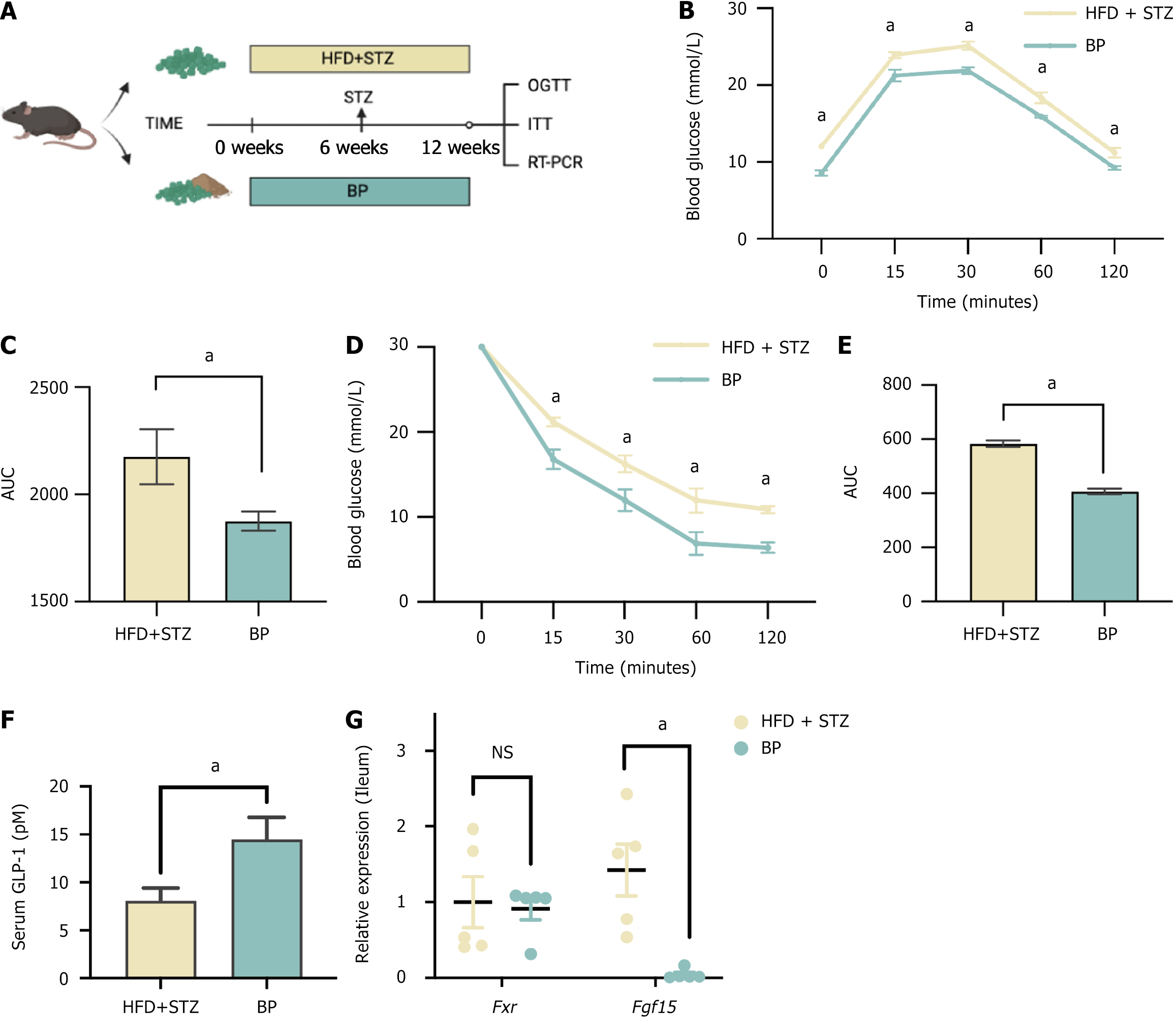Copyright
©The Author(s) 2025.
World J Diabetes. Jun 15, 2025; 16(6): 103616
Published online Jun 15, 2025. doi: 10.4239/wjd.v16.i6.103616
Published online Jun 15, 2025. doi: 10.4239/wjd.v16.i6.103616
Figure 5 Long-term feeding of bile powder prevented blood glucose disorders.
A: Schematic diagram. Mice were randomly divided into two groups (n = 5 per group). All of the mice were fed a high-fat diet (HFD) for 6 weeks and were injected with streptozotocin (STZ) (50 mg/kg, intravenous) to induce blood glucose disorder. An HFD was continued for an additional 6 weeks. Mice in the bile powder group were treated with bile powder (75 mg/kg/day, intragastric gavage) for 12 weeks, and those in the HFD + STZ group were treated with the vehicle; B: Oral glucose tolerance test after 12 weeks of treatment; C: The area under the curve of the oral glucose tolerance test after 12 weeks of treatment; D: Insulin tolerance test after 12 weeks; E: The area under the curve of the insulin tolerance test after 12 weeks of treatment; F: Serum glucagon-like peptide-1 levels; G: Relative expression of farnesoid X receptor and fibroblast growth factor 15 gene expression in the ileum. Data are shown as mean ± SEM. P < 0.05. ns: Not significant (P > 0.05) compared between groups. Statistical analysis was performed using the Student’s t-test. HFD: High-fat diet; STZ: Streptozotocin; BP: Bile powder; OGTT: Oral glucose tolerance test; ITT: Insulin tolerance test; AUC: Area under the curve; GLP-1: Glucagon-like peptide-1; RT-PCR: Real-time polymerase chain reaction.
- Citation: Sun YM, Kuang JL, Zhang HH, Xia XX, Wang JY, Zheng D, Zhou KJ, Tang YJ, Zhao AH, Jia W, Xie GX, Zheng XJ. Pig bile powder maintains blood glucose homeostasis by promoting glucagon-like peptide-1 secretion via inhibiting farnesoid X receptor. World J Diabetes 2025; 16(6): 103616
- URL: https://www.wjgnet.com/1948-9358/full/v16/i6/103616.htm
- DOI: https://dx.doi.org/10.4239/wjd.v16.i6.103616









